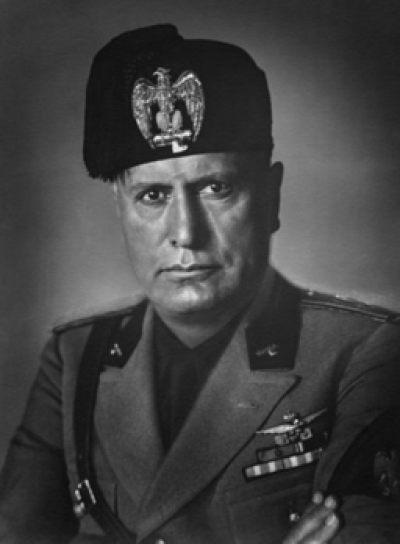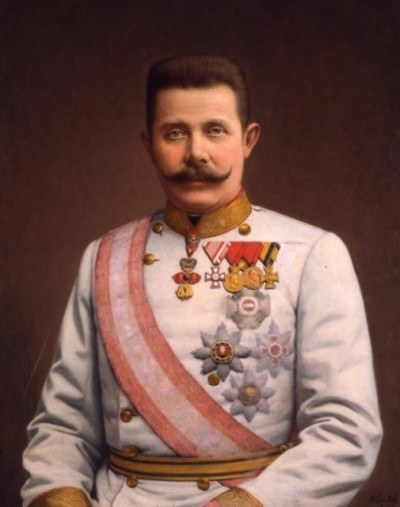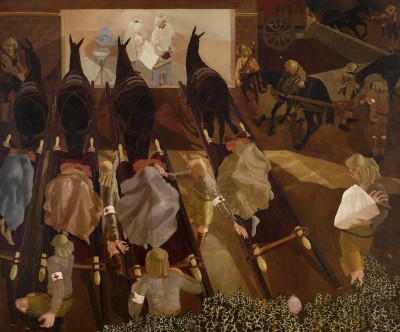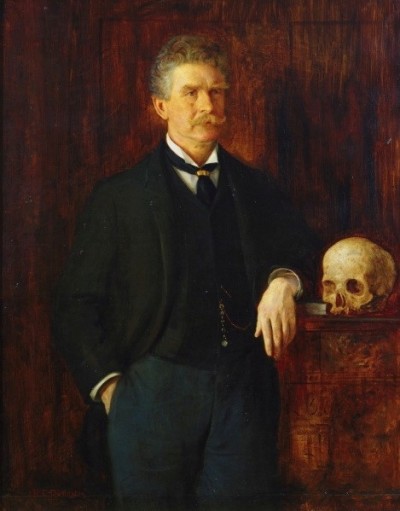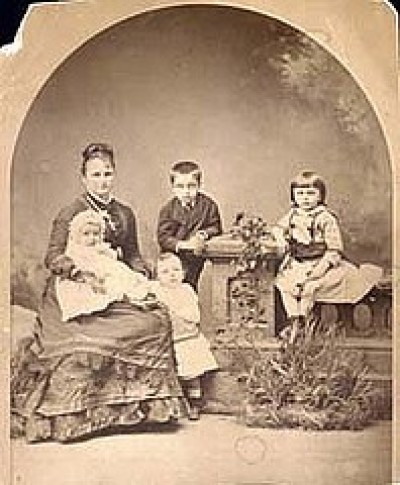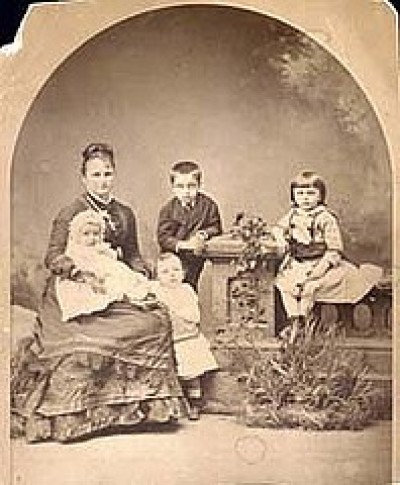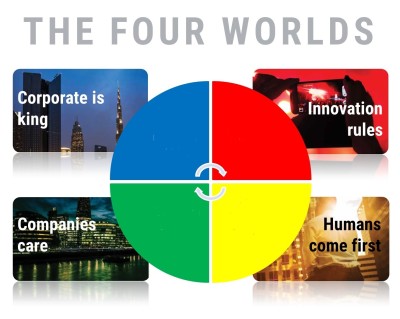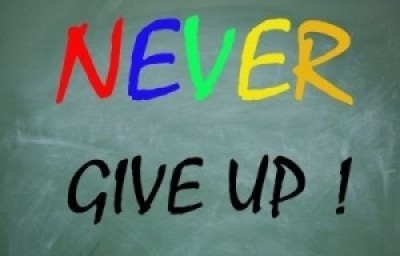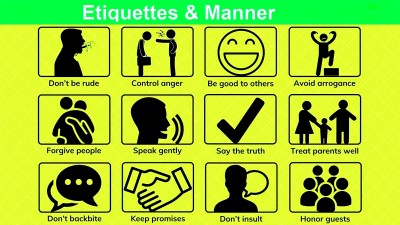Course description
The Rise and Fall of Mussolini & Fascist Italy
 Late April, 1945, northern Italy. The end of the war in Europe was days away, the Germans were in full retreat, heading up the Italian peninsula for the German border or, if possible, safety in neutral Switzerland.
Late April, 1945, northern Italy. The end of the war in Europe was days away, the Germans were in full retreat, heading up the Italian peninsula for the German border or, if possible, safety in neutral Switzerland.
On the roads, also running away, were the Italians who had stayed loyal to the Fascist regime and to the Germans. Rich, right-wing businessmen; notorious secret policemen; and politicians of the pro-German government; the government that for the last two years had ruled the northern half of Italy for Hitler and not for the Italian people. The Fascist government had survived only thanks to the support of the German military.
Now, it was all over. The ministers and senior civil servants of the puppet government were heading north, looking for somewhere to hide from the anger and disgust of their own people.
On a small road, a couple of cars slowed down as a group of communist guerrillas signaled them to stop. These travellers made an unusual group. Mostly men, a couple of women; and one completely bald man, about sixty years old and wearing a German army uniform although he was clearly Italian. The guerrillas knew that something was not right and, within a few minutes, they identified the bald man as Mussolini, the dictator. One of the women was Claretta Petacci, his mistress of many years. The others were ministers and officials of the recently collapsed government.
 They were all put onto a truck and taken to a nearby house where they spent the night. In the morning, without ceremony, they were taken out and shot. Mussolini and his mistress died holding on to each other. Mussolini asked to be shot in the chest, not the face. He knew that film and photos of his dead body would speed around the world – he wanted to look his best. Even in the closing seconds of his life, his famous vanity had not left him.
They were all put onto a truck and taken to a nearby house where they spent the night. In the morning, without ceremony, they were taken out and shot. Mussolini and his mistress died holding on to each other. Mussolini asked to be shot in the chest, not the face. He knew that film and photos of his dead body would speed around the world – he wanted to look his best. Even in the closing seconds of his life, his famous vanity had not left him.
The bullet-pocked bodies were taken to an industrial city close by and hanged upside down, like animals, at a petrol station. A crowd gathered to see the end of Mussolini and his regime after twenty-one years.
 Mussolini started life in late July, 1883 in a small village, Dovia di Predappio, in Italy. His mother was a very devout Catholic, his father an atheist. Every Sunday, his mother would pull him along the dusty streets of Dovia to church and his father would stay home and read the newspaper. Already, the young Benito Mussolini was caught between two opposing philosophies, two strong opinions that he struggled to bring together.
Mussolini started life in late July, 1883 in a small village, Dovia di Predappio, in Italy. His mother was a very devout Catholic, his father an atheist. Every Sunday, his mother would pull him along the dusty streets of Dovia to church and his father would stay home and read the newspaper. Already, the young Benito Mussolini was caught between two opposing philosophies, two strong opinions that he struggled to bring together.
And these were changing times in Italy. Until recent years, Italy had been a region, a peninsula, a mix of small principalities and the colonies of foreign kings. But, as the nineteenth century neared its end, it seemed that what many Italians had been dreaming of was about to come true: a united Italy, from the Swiss border to the southern tip of Sicily, all one nation.
 At the same time, there were the exciting, new politics of the Left. Communists, Anarchists, Socialists, Social Democrats – they all seemed to speak for a new internationalism, a brotherhood of the workers, that rejected the nationalism that went with unification in Italy. Patriotic Nationalism or International Socialism? Two strong philosophies pulling in opposite directions.
At the same time, there were the exciting, new politics of the Left. Communists, Anarchists, Socialists, Social Democrats – they all seemed to speak for a new internationalism, a brotherhood of the workers, that rejected the nationalism that went with unification in Italy. Patriotic Nationalism or International Socialism? Two strong philosophies pulling in opposite directions.
As a boy, he worked with his father, a blacksmith, and he picked up a lot of his father’s radical politics. The young Benito grew up hearing of the Italian revolutionary, Garibaldi, and the Russian anarchist, Mikhail Bakunin. Maybe this was why he was such a difficult student at his conservative, Catholic school. The one his mother had insisted he go to. He only just avoided being expelled several times but, always intelligent, he qualified as a primary school teacher in 1901. He was eighteen.
The following year, Mussolini left for Switzerland to look for work and to avoid military service in Italy. He drifted from job to job but, all the while, he was reading, mostly politics. Marxism, socialism, liberalism, anarchism, conservatism. He read and learned about all the major political philosophies. He even entered political journalism and political activism, joining the Swiss Socialist Party.
After a couple of years, the Italian government offered all those young men escaping military service an amnesty, on the condition that they serve the two years in the army that they were supposed to. There wouldn’t be a better offer and Mussolini, along with thousands of young Italian men, took it. He was in the army from January, 1905, until September, 1906. Then, he returned to teaching.
Mussolini continued his political writing and also worked in Trento, an Italian-speaking city under Austrian control. He expressed many international socialist ideas but, all the while, his experiences in Switzerland and Italian Austria showed him how Italians could quickly become second-class citizens if they lived under non-Italian governments.
 In this time, from 1906 when he left the army, until 1914 when the First World War began, Mussolini was heavily involved in the socialist movement in Italy. He was a leading political thinker, his articles and speeches helping to fill the pages of the socialist press. However, many other socialists began, increasingly, to see him as dangerous.
In this time, from 1906 when he left the army, until 1914 when the First World War began, Mussolini was heavily involved in the socialist movement in Italy. He was a leading political thinker, his articles and speeches helping to fill the pages of the socialist press. However, many other socialists began, increasingly, to see him as dangerous.
Mussolini had been greatly influenced by two political ideologies. He had developed a deep distrust of all government and a belief that a liberal democracy like those then developing in countries like France, Britain and Holland, was a waste of time, a delusion. From reading Nietzsche, Mussolini felt that the strongest and best of each race should lead their people into a bright, imperial future where they would dominate the ‘lesser races’ around them. The alternative was to be dominated – and racial pride could never allow that.
He seemed to want to use the philosophies of both the extreme Left and extreme Right. And then turn them into a new militarist, imperialist and nationalist movement. Many at the time, thought his movement was still leftist, just a kind of socialism. Others saw that the workers would be controlled in government-run unions. They also noticed that rich and powerful businessmen liked to give their money to this new socialist nationalism or national socialism.
 Mussolini’s hardening attitudes caused serious difficulties with his internationalist, left-wing colleagues. The First World War brought matters to a head. The war made Mussolini still more militarist and patriotic while it pushed many socialists in the opposite direction. It couldn’t go on and the Italian Socialists expelled Mussolini who immediately rejoined the Italian army – his political views left him with no alternative – and served for two years, fighting the Austrians in the Alps, until he was wounded in 1917. He had been an excellent soldier.
Mussolini’s hardening attitudes caused serious difficulties with his internationalist, left-wing colleagues. The First World War brought matters to a head. The war made Mussolini still more militarist and patriotic while it pushed many socialists in the opposite direction. It couldn’t go on and the Italian Socialists expelled Mussolini who immediately rejoined the Italian army – his political views left him with no alternative – and served for two years, fighting the Austrians in the Alps, until he was wounded in 1917. He had been an excellent soldier.
Mussolini returned to lead a reactionary newspaper and began to convert his political thinking into an ‘-ism’: fascism, the belief that everyone in a nation must come together to support the state and the workers should be well looked after but forbidden to strike or organise themselves. He strongly believed in the war and fighting against the Germans, Austrians and Turks to help the French and British win. For this reason, and probably this reason alone, the French Socialist Party and the British secret service, M.I.6., started, quietly, to send him a little money.
 The war ended with Italy on the winning side. Nonetheless, in the political and social unrest of the immediate post-war years, Italy was in national confusion with constant changes of government, fighting in the streets, and frequent assassinations. This was just the kind of political arena in which a man who believed in strength and action could go places. And Mussolini was that man.
The war ended with Italy on the winning side. Nonetheless, in the political and social unrest of the immediate post-war years, Italy was in national confusion with constant changes of government, fighting in the streets, and frequent assassinations. This was just the kind of political arena in which a man who believed in strength and action could go places. And Mussolini was that man.
In 1922, with a private army, he marched on the capital, Rome, and took control of the national government at a time when it was in systemic collapse. He gave himself the title ‘Il Duce’, ‘The Leader’, and at first he seemed to respect the old mechanisms but, he soon began to change the form of government so that he would be absolute dictator; and his Fascist party would be the only one allowed. If comparisons were made with the old Roman dictators, like Julius Caesar, then Mussolini, far from being offended, was flattered.
But, comparisons with ancient Rome went further. He continually referred to Italy’s glorious past in the days of the Roman Empire. He borrowed symbols of imperial Rome, like the fasces (or sticks used at that time to show authority) which gave its name to his new fascist politics. He said, quite openly, that he meant to rebuild an Italian empire and, in 1935, he went on to attack and occupy Ethiopia, the last uncolonised nation in Africa. It was seen as a cowardly act that brought no credit to Italy.
 Despite this, Mussolini and his new brand of politics had formed quite a large following in Europe and beyond. His methods and beliefs influenced Adolf Hitler in his rise to power in Germany up to 1933. He was also an influence on the dictatorships of General Franco in Spain and Salazar in Portugal. More than this, he sent money and soldiers to help Franco in his fight against the elected Spanish government. Even the Japanese military government borrowed some of Mussolini’s ideas.
Despite this, Mussolini and his new brand of politics had formed quite a large following in Europe and beyond. His methods and beliefs influenced Adolf Hitler in his rise to power in Germany up to 1933. He was also an influence on the dictatorships of General Franco in Spain and Salazar in Portugal. More than this, he sent money and soldiers to help Franco in his fight against the elected Spanish government. Even the Japanese military government borrowed some of Mussolini’s ideas.
And then came the Second World War and, for Mussolini, it all started to go tragically wrong. When the Germans attacked France, Mussolini’s Italy, an ally of Germany, also attacked France in the South, seizing a small part of France for Italy. Just like in Ethiopia, the attack was seen as cowardly.
The next setback was that the Italian forces still occupying Ethiopia attacked the tiny British forces in neighbouring Somaliland. Despite the small numbers of British troops, the Italians were forced to retreat to their bases in an embarrassing defeat for Italy and Mussolini. The Germans came to the rescue of their Italian allies whose wartime reputation seemed to be retreat and surrender. The same happened when Mussolini attacked Greece.
It was clear that millions of Italian soldiers and their families, were not really in favour of the war or the Germans, and certainly not of Mussolini’s incompetent attempts to pull an empire for Italy out of Germany’s aggression.
 And for their part, the Germans despised the Italians as racially inferior. Things had also gone sour between Hitler and Mussolini. Hitler, perhaps understandably, had lost all respect for his Italian partner whose military support of Hitler’s war was worse than useless.
And for their part, the Germans despised the Italians as racially inferior. Things had also gone sour between Hitler and Mussolini. Hitler, perhaps understandably, had lost all respect for his Italian partner whose military support of Hitler’s war was worse than useless.
Back in Italy, people had long ago tired of Mussolini’s vanity, his flattering uniforms, and his self-created titles: ‘His Excellency’, ‘First Marshal’, ‘Founder of the Empire’. If they had not before, these names now just sounded ridiculous.
In 1943, the Allies invaded Italy and began to fight up from the South. Suddenly, but predictably, there was a coup d'etat in Rome, the new government changed sides in the war, abandoning the Germans and joining the anti-Fascist Allies. Mussolini was arrested and sent to an escape-proof prison at the top of a high mountain.
 The German reaction to all this was fast and terrible. Many Italian soldiers were captured and killed, or sent to concentration camps. Supporters of the new government were assassinated and, in a dramatic operation, Mussolini was rescued from his mountain-top prison by expert German mountain soldiers and made the head of a puppet government of the North of Italy where the Germans still ruled.
The German reaction to all this was fast and terrible. Many Italian soldiers were captured and killed, or sent to concentration camps. Supporters of the new government were assassinated and, in a dramatic operation, Mussolini was rescued from his mountain-top prison by expert German mountain soldiers and made the head of a puppet government of the North of Italy where the Germans still ruled.
And so he continued, for nearly two more years. Discredited and hated by almost all Italians until the final collapse. Through 1944 and 1945, German defeat became absolute and their army in Italy began quickly to retreat north.
When they did so, Mussolini went with them. What else could he do? As he travelled down a country road, trying to find a safe way to the Swiss border, with his most loyal followers and his handsome mistress, he looked up to see a group of young communist guerrillas waving at his car, with their guns, to stop. It did not look good for him…
If you want to watch some videos on this topic, you can click on the links to YouTube videos below.
If you want to answer questions on this article to test how much you understand, you can click on the green box: Finished Reading?
Videos :
1. History brief: Benito Mussolini Gains Power in Italy (4:22)
2. Benito Mussolini: Biography of Fascist Italy's Dictator (5:00)
3. The Story of Fascism: Mussolini’s Rise to Power (2:20)
4. Mussolini Strives for a new Roman Empire (3:26)
5. The Rise and Fall of Benito Mussolini (6:26)
6. When Mussolini met Hitler (1944) – (1:06)
7. Killing Mussolini (6:11)
8. Benito Mussolini Speech Footage (1:12)

 Late April, 1945, northern Italy. The end of the war in Europe was days away, the Germans were in full
Late April, 1945, northern Italy. The end of the war in Europe was days away, the Germans were in full  They were all put onto a truck and taken to a nearby house where they spent the night. In the morning,
They were all put onto a truck and taken to a nearby house where they spent the night. In the morning,  Mussolini started life in late July, 1883 in a small village, Dovia di Predappio, in Italy. His mother was a very
Mussolini started life in late July, 1883 in a small village, Dovia di Predappio, in Italy. His mother was a very  At the same time, there were the exciting, new politics of
At the same time, there were the exciting, new politics of  In this time, from 1906 when he left the army, until 1914 when the First World War began, Mussolini was heavily involved in the socialist movement in Italy. He was a leading political thinker, his articles and speeches helping to fill the pages of the socialist
In this time, from 1906 when he left the army, until 1914 when the First World War began, Mussolini was heavily involved in the socialist movement in Italy. He was a leading political thinker, his articles and speeches helping to fill the pages of the socialist  Mussolini’s hardening
Mussolini’s hardening  The war ended with Italy on the winning side.
The war ended with Italy on the winning side. Despite this, Mussolini and his new
Despite this, Mussolini and his new And for their part, the Germans
And for their part, the Germans  The German reaction to all this was fast and terrible. Many Italian soldiers were captured and killed, or sent to
The German reaction to all this was fast and terrible. Many Italian soldiers were captured and killed, or sent to 